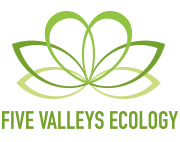The Business Case for Biodiversity Management
Integrating biodiversity management within your existing environmental management performance framework can add significant value to your business. Further information on the business case for biodiversity management can be found by clicking here.
Our corporate services fall into two main areas; Site Biodiversity Action Plans (site BAPs) which are described below, and Biodiversity Management Plans which you can find out more about by clicking here.
Site Biodiversity Action Plans (Site BAPs)
 One of the most effective ways in which you can manage the biodiversity on your site or landholding is through the design and implementation of Site Biodiversity Action Plans (site BAPs).
One of the most effective ways in which you can manage the biodiversity on your site or landholding is through the design and implementation of Site Biodiversity Action Plans (site BAPs).
The main difference between Site BAPs and Biodiversity Management Plans is that Site BAPs are more formalised in terms of monitoring and reporting, and closely integrated with targets for particular types of habitats and species set out at national level in the UK BAP and at local and regional level; for example in the Gloucestershire BAP. Management plans are not normally provided as part of a Site BAP.
Organisations working on BAPs can use the Biodiversity Action Reporting System (BARS) to maintain data on your Site BAP to provide a picture of progress towards BAP targets at local, regional and national scales. By using BARS, organisations working on BAPs can maintain their data in a secure environment and enable an overview of BAP progress towards targets for each habitat and species at local, regional and national scales.
What Five Valleys Ecology Can Do
Our Site Biodiversity Management Plan service typically consists of a number of key stages:

- Consultation to establish your exact requirements and devise a suitable scope of work;
- An ‘extended’ Phase l habitat survey to establish the ecological features and baseline conditions at your site. We can use a high-tech Geographic Information System (GIS) survey and mapping workflow which enables more accurate identification of ecological features on your site;
- A desk study where existing data would be obtained from the Local Biological Records Centre as an initial survey of the site represents only a ‘snapshot’ of the ecological resources and may miss some issues that may be present at other times. Online resources may also be used such as the Multi-Agency Geographic Information System for the Countryside (MAGIC);
- Production of Site BAP using information from the desk study, field survey work and engagement with a range of stakeholders. This document identifies the conservation priorities, objectives and targets for action in terms of identified BAP habitats and species against which progress can be measured;
- Monitoring to assess progress towards the conservation priorities and targets identified in the Site BAP by undertaking biological recording of relevant habitats and species. This identifies where further action and allocation of resources may be required in order to meet the targets specified in the Site BAP; and
- Secure data management and reporting using BARS
A number of further stages can be included if appropriate such as:
- Facilitating communication regarding the benefits of Site BAPs at both board level and other levels internally within your organisation to gain necessary support and ensure successful implementation;
- Design, dissemination and collation of data from stakeholder questionnaires;
- Geographic Information System (GIS) analysis of datasets for designated sites and protected/notable species;
- Briefing your grounds maintenance team on the implementation of management prescriptions (if a management plan has been provided);
- Provide details and liaising with experienced suppliers who could undertake conservation management of your site (if a management plan has been provided); and
- Supervision of community and staff engagement activities (if a management plan has been provided)
The above information is not exhaustive as this is a bespoke service and would be tailored to your exact requirements following consultation.
Call Tim Smith on 01453 759306 (M:07732 397984) or email us to arrange a free no-obligation consultation to discuss your site and requirements in more detail.
